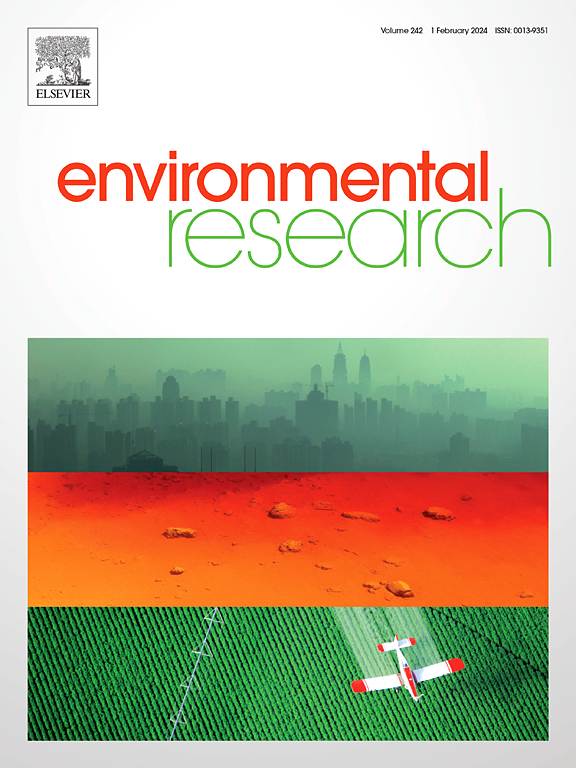Microplastics regulate soil microbial activities: Evidence from catalase, dehydrogenase, and fluorescein diacetate hydrolase
IF 7.7
2区 环境科学与生态学
Q1 ENVIRONMENTAL SCIENCES
引用次数: 0
Abstract
Soil microbiomes drive many soil processes and maintain the ecological functions of terrestrial ecosystems. Microplastics (MPs, size <5 mm) are pervasive emerging contaminants worldwide. However, how MPs affect soil microbial activity has not been well elucidated. This review article first highlights the effects of MPs on overall soil microbial activities represented by three soil enzymes, i.e., catalase, dehydrogenase, and fluorescein diacetate hydrolase (FDAse), and explores the underlying mechanisms and influencing factors. Abundant evidence confirms that MPs can change soil microbial activities. However, existing results vary greatly from inhibition to promotion and non-significance, depending on polymer type, degradability, dose, size, shape, additive, and aging degree of the target MPs, soil physicochemical and biological properties, and exposure conditions, such as exposure time, temperature, and agricultural practices (e.g., planting, fertilization, soil amendment, and pesticide application). MPs can directly affect microbial activities by acting as carbon sources, releasing additives and pollutants, and shaping microbial communities via plastisphere effects. Smaller MPs (e.g., nanoplastics, 1 to <1000 nm) can also damage microbial cells through penetration. Indirectly, MPs can change soil attributes, fertility, the toxicity of co-existing pollutants, and the performance of soil fauna and plants, thus regulating soil microbiomes and their activities. In conclusion, MPs can regulate soil microbial activities and consequently pose cascading consequences for ecosystem functioning.
微塑料能调节土壤微生物的活动:来自过氧化氢酶、脱氢酶和荧光素二乙酸酯水解酶的证据
土壤微生物群驱动着许多土壤过程,并维持着陆地生态系统的生态功能。微塑料(MPs,大小为 5 毫米)是全球普遍存在的新兴污染物。然而,人们对微塑料如何影响土壤微生物活动还没有很好的解释。这篇综述文章首先强调了以过氧化氢酶、脱氢酶和二醋酸荧光素水解酶(FDAse)这三种土壤酶为代表的 MPs 对土壤微生物整体活性的影响,并探讨了其潜在机制和影响因素。大量证据证实,MPs 可以改变土壤微生物的活动。然而,现有的结果差异很大,从抑制到促进再到无显著性,这取决于聚合物类型、降解性、剂量、大小、形状、添加剂和目标 MPs 的老化程度、土壤理化和生物特性以及暴露条件,如暴露时间、温度和农业实践(如种植、施肥、土壤改良和施用农药)。MPs 可作为碳源直接影响微生物活动,释放添加剂和污染物,并通过质球效应塑造微生物群落。较小的 MPs(如 1 到 1000 纳米的纳米塑料)也可以通过渗透破坏微生物细胞。间接而言,MPs 可以改变土壤属性、肥力、共存污染物的毒性以及土壤动物和植物的表现,从而调节土壤微生物群及其活动。总之,多孔介质可以调节土壤微生物的活动,从而对生态系统的功能产生连带影响。
本文章由计算机程序翻译,如有差异,请以英文原文为准。
求助全文
约1分钟内获得全文
求助全文
来源期刊

Environmental Research
环境科学-公共卫生、环境卫生与职业卫生
CiteScore
12.60
自引率
8.40%
发文量
2480
审稿时长
4.7 months
期刊介绍:
The Environmental Research journal presents a broad range of interdisciplinary research, focused on addressing worldwide environmental concerns and featuring innovative findings. Our publication strives to explore relevant anthropogenic issues across various environmental sectors, showcasing practical applications in real-life settings.
 求助内容:
求助内容: 应助结果提醒方式:
应助结果提醒方式:


